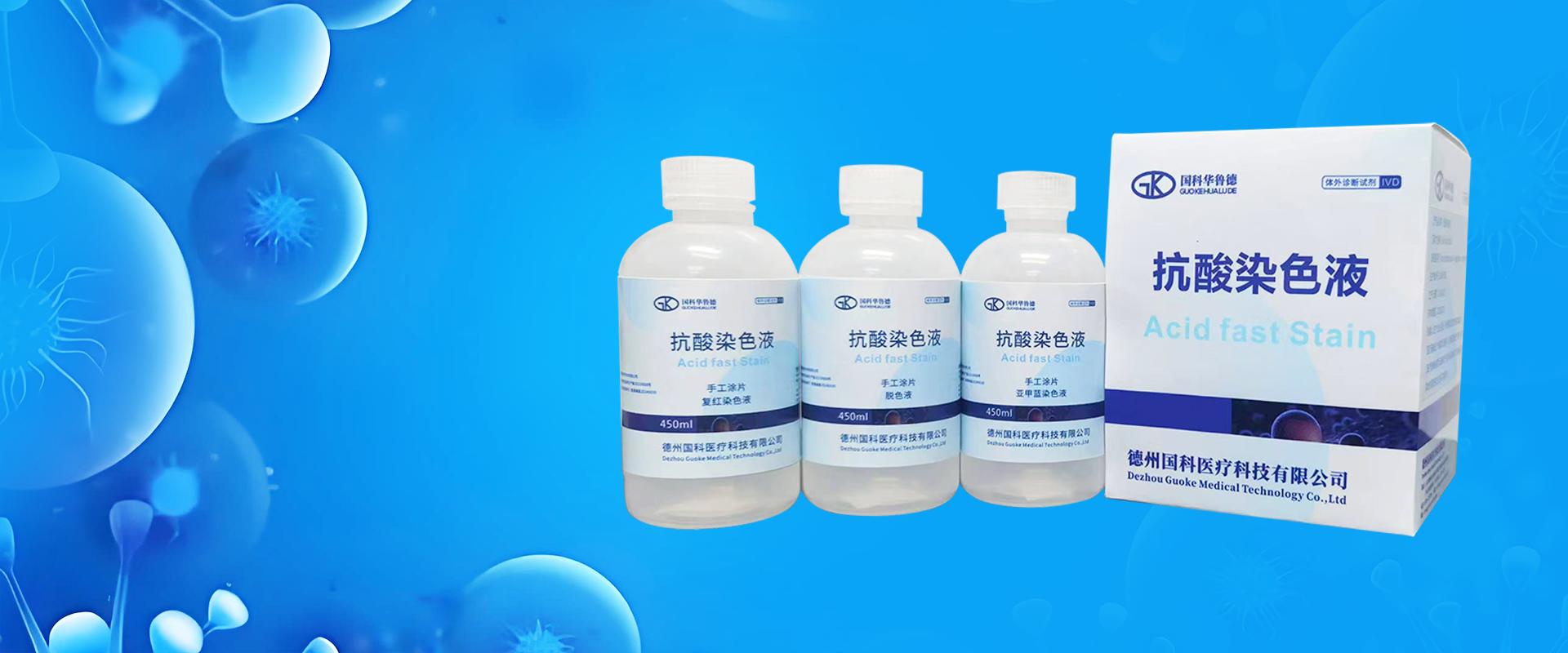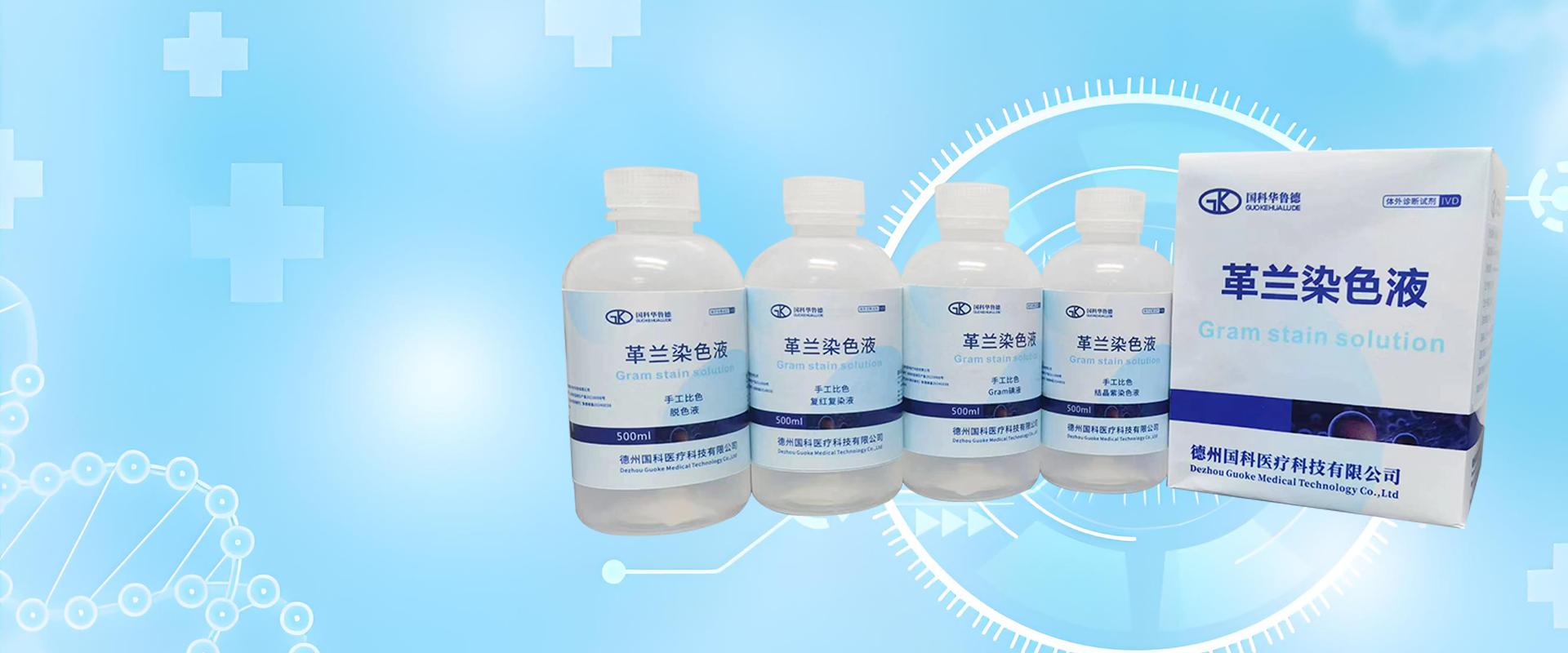产品中心
Product Description
This reagent combines the principles of immunology and fluorescence colorimetry. Through immunofluorescence technology, it is used to label various types of acid resistant mycobacteria in the test sample, and fluorescence biomicroscopy is applied for detection. It is also used for fluorescence immunomorphological examination of various types of acid resistant mycobacteria in the sample.
Packaging specifications: 100 people/box, 200 people/box, 300 people/box
Product Description: This staining solution is a new type of staining solution for rapid detection of Mycobacterium tuberculosis. The fluorescent dye labeled antibody in the reagent is combined with the test substance to stain it, and the fluorescence intensity and morphology are observed through a fluorescence microscope to determine the presence of various acid resistant mycobacteria.
Testing principle: Acid fast Mycobacterium immunofluorescence staining solution combines with the corresponding antigen of the acid fast Mycobacterium cell wall in the sample through immunofluorescence technology, and presents specific fluorescence imaging under excitation light in the B band (single staining)/UV band (double staining) of the fluorescence microscope. This method belongs to immunofluorescence staining, and acid resistant Mycobacterium exhibits cash yellow fluorescence with high sensitivity; And the process does not require heating.
Product advantages:
1. This product is easy to operate, and under low magnification, it is easy to detect golden acid resistant Mycobacterium. The reading speed is fast, which is conducive to batch inspection.
2. Due to the presence of a large amount of lipids in the cell wall of acid resistant Mycobacterium, it is generally not easy to stain, and fluorescence staining is compared to traditional acid resistant staining. High detection sensitivity can significantly improve the detection rate of low bacterial content specimens.
3. Under a fluorescence microscope, the morphology of acid resistant Mycobacterium labeled with fluorescence signal is clear and visible, with a typical structure. It can be clearly determined under a 40x microscope, and the background is dark black with large contrast, making it easy to observe.
4. Fluorescence method has a wide range of applications and can be applied to paraffin sections of tissues, as well as sputum, bronchoalveolar lavage fluid, pleural and abdominal fluids, etc.
Sample requirements: Applicable to the examination of human tissue samples, including smears of clinical specimens such as sputum, pus, body fluids, and blood, as well as sliced samples of human tissue. After staining, observe acid resistant Mycobacterium under a fluorescence microscope.
Phlegm samples can be taken from cheese, pus, or suspicious parts with a thickness of 0.05-0.1ml. A 10mm x 20mm oval shaped sputum film can be applied on the right two-thirds of the slide, dried naturally, and heated and fixed before staining; If it is paraffin sectioned tissue, routine dewaxing, washing with water, and drying with water for testing.
2. Directly drop fluorescent staining solution onto the sample (only one drop is needed for direct staining). The staining solution should cover or submerge the entire sample, allowing the staining solution to fully combine with the sample. Stain at room temperature for 15 minutes and wash with running water.
3. Add one drop of B reagent, decolorize for 1 minute and seconds, and rinse with running water.
4. Observation under a fluorescence microscope (B-band), first using a 10 x eyepiece and a 20 x eyepiece, it was found that the fluorescent substance suspected to be acid fast Mycobacterium was detected, and confirmed using a 40 x eyepiece
Explanation of test results: By observing the typical morphology and fluorescent substances of acid resistant Mycobacterium under a microscope, determine whether the pathogen is infected with acid resistant Mycobacterium.
Contraindications and precautions:
1. This product is only used for in vitro diagnosis.
2. Close the reagent bottle tightly after each use to prevent reagent evaporation and contamination.
3. Reagents have a certain degree of corrosiveness, please pay attention to appropriate protection.
For your safety and health, please wear laboratory clothes and disposable gloves when operating.

























